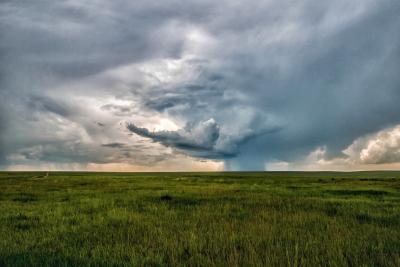Warming Weakens the June 2012 North American Derecho
A derecho is a severe and long-lasting windstorm that travels in a straight line. They are often associated with a fast-moving mesoscale convective system. While not as common as tornadoes or hurricanes, derechos can cause significant damage to both life and property. Understanding how derechos respond to climate change is important for infrastructure planning. In a recent study, researchers examined the potential impact of a warmer climate on the June 2012 North American derecho. They found that under future warming conditions, the derecho would shrink, have a narrower swath, and decay earlier than under current conditions.
Simulating derechos requires much higher resolutions than what is computationally feasible for regional and global climate models. As the first to investigate the effects of climate change on derechos, this study focused on a previously observed impactful derecho event and explored how it might have unfolded in a future with global warming. Convection-permitting simulations show how warming-induced changes in the thermodynamic environment can lead to complex changes in these storms. This study highlights the importance of conducting detailed analyses to identify the underlying mechanisms of how derechos and other types of convective storms may change with future warming.
Researchers investigated the impact of global warming on the June 2012 North American derecho with computational resources from the National Energy Research Scientific Computing Center (NERSC). The study involved comparing convection-permitting Weather Research and Forecasting model simulations of the derecho under real conditions (control) with simulations conducted under an end of the 21st century pseudo-global warming scenario based on the Shared Socioeconomic Pathways (SSP5-8.5). The results showed that the derecho experienced a shrinkage in its swath and an earlier decay in the future environment compared to the control simulations. This resulted in significantly fewer destructive impacts on Mid-Atlantic coastal areas. The derecho's shrinkage was due to reduced near-surface relative humidity, a projected response to global warming over land, which suppressed updraft and strengthened downdraft, limiting the storm's spatial extent. Researchers attributed the premature decay to the intensification of an isolated deep convection event fueled by increased moisture from the Great Lakes under warming. The deep convective event developed ahead of the derecho, consuming most of the energy and moisture on the derecho path, which impeded the derecho’s propagation to Mid-Atlantic coastal areas.

